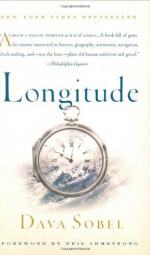|
This section contains 266 words (approx. 1 page at 400 words per page) |

|
Chapter 9: Hands on Heaven's Clock Summary and Analysis
Chapter 9 introduces us to two astronomers, a Britishman John Hadley and an American Thomas Godfrey. They invent a method that can calculate lunar distance. This put a lunar solution within closer reach. Edmund Halley also took up a study of the moon's motions and made several successful predictions about celestial movements. His heir, James Bradley, continued his search. Bradley saw his mission as a Royal Astronomer as primarily aiding navigation. Bradley teamed up with a German mapmaker, Tobias Mayer to help compete for the longitude prize. Mayer drew influence from his correspondence with mathematician Leonhard Euler who is famous for reducing the motion of the planets to a few equations. The problem with the lunar method, however, is that it took a great deal of calculation. Anyone who could complete these calculations showed...
(read more from the Chapter 9: Hands on Heaven's Clock Summary)
|
This section contains 266 words (approx. 1 page at 400 words per page) |

|




